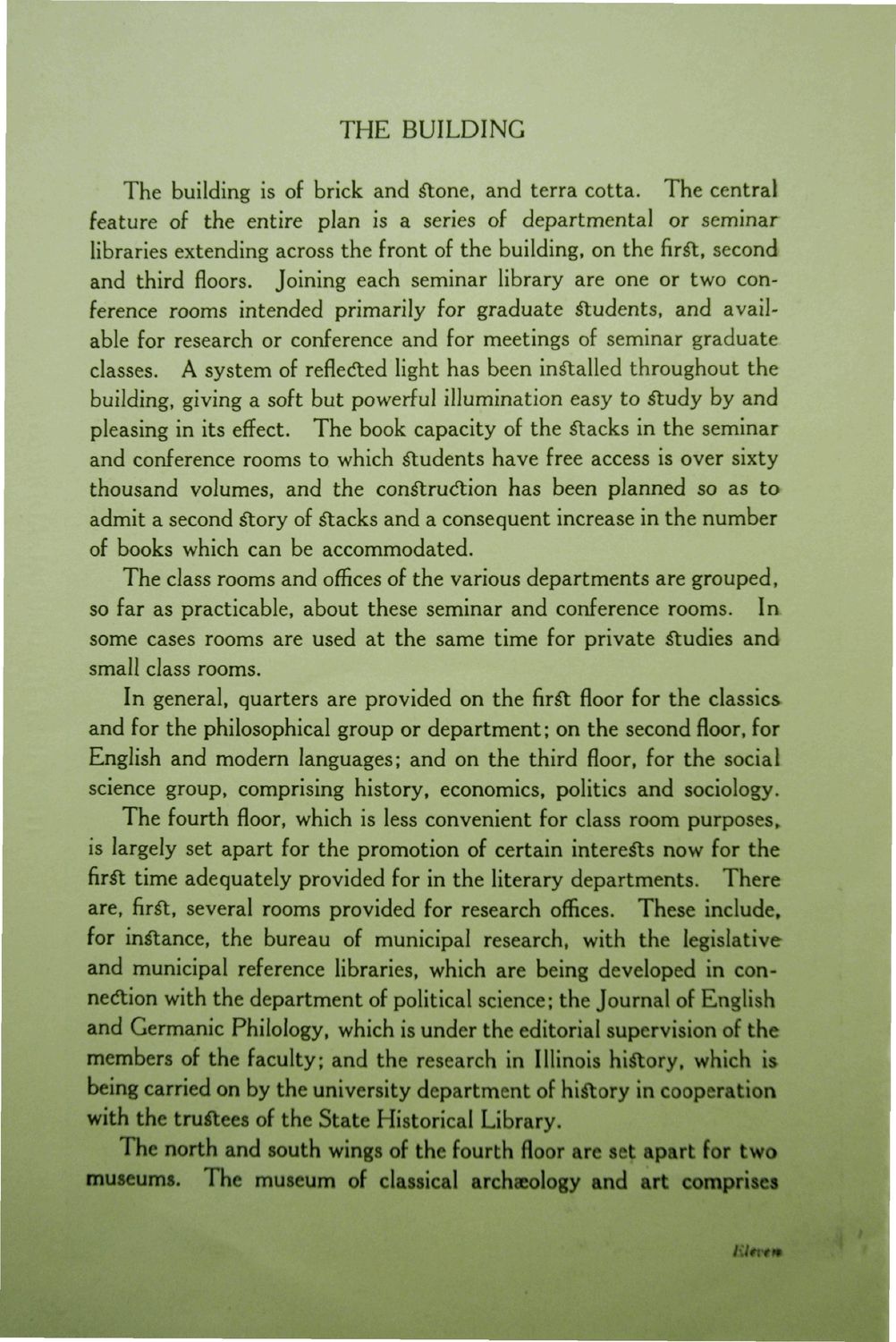| |
| |
Caption: Dedication - Lincoln Hall
This is a reduced-resolution page image for fast online browsing.

EXTRACTED TEXT FROM PAGE:
THE BUILDING The building is of brick and Stone, and terra cotta. The central feature of the entire plan is a series of departmental or seminar libraries extending across the front of the building, on the firSt, second and third floors. Joining each seminar library are one or two conference rooms intended primarily for graduate Students, and available for research or conference and for meetings of seminar graduate classes. A system of refledted light has been installed throughout the building, giving a soft but powerful illumination easy to Study by and pleasing in its effect. The book capacity of the Slacks in the seminar and conference rooms to which Students have free access is over sixty thousand volumes, and the construction has been planned so as t o admit a second Story of Stacks and a consequent increase in the number of books which can be accommodated. The class rooms and offices of the various departments are grouped, so far as practicable, about these seminar and conference rooms. In some cases rooms are used at the same time for private Studies and small class rooms. In general, quarters are provided on the firSt floor for the classics and for the philosophical group or department; on the second floor, for English and modern languages; and on the third floor, for the social science group, comprising history, economics, politics and sociology. The fourth floor, which is less convenient for class room purposes, is largely set apart for the promotion of certain interests now for the firSt time adequately provided for in the literary departments. There are, firSt, several rooms provided for research offices. These include, for instance, the bureau of municipal research, with the legislative and municipal reference libraries, which are being developed in connection with the department of political science; the Journal of English and Germanic Philology, which is under the editorial supervision of the members of the faculty; and the research in Illinois history, which is being carried on by the university department of history in cooperation with the trustees of the State Historical Library. The north and south wings of the fourth floor are set apart for two museums. The museum of classical archaeology and art comprises tiltvti*
| |